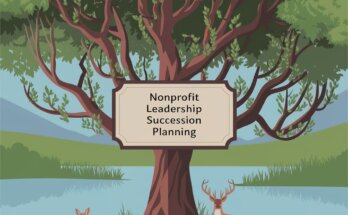The role of innovation in nonprofit leadership cannot be overstated in this age. Nonprofits are constantly challenged to adapt to changing environments, meet evolving community needs, and maximize their impact with limited resources.
This is where innovation comes into play. It is not just about adopting new technologies; it’s about fostering a mindset that embraces creativity, encourages experimentation, and ultimately drives progress.
Understanding Innovation in Nonprofit Leadership
Before we delve deeper, let’s clarify what we mean by innovation.
In the nonprofit sector, innovation can be defined as the introduction of new ideas, methods, or products that significantly improve the effectiveness of an organization in achieving its mission.
This can involve:
- New program models.
- Creative fundraising strategies.
- Enhanced community engagement methods.
- Technology adoption to streamline operations.
Innovation in leadership is essential because it allows nonprofits to adapt to the changing needs of their communities, while ensuring that they remain relevant and impactful.
Why Nonprofit Needs to Innovate?
- Increased Effectiveness: Innovative approaches can help organizations become more efficient in delivering services and reaching their target populations.
- Enhanced Engagement: Embracing innovation fosters stronger relationships with donors, volunteers, and the communities served.
- Sustainability: Innovative practices can lead to diversified funding streams and improved financial health, helping organizations weather economic uncertainties.
- Scalability: Effective innovations can often be replicated or scaled to other areas, increasing overall impact.
Strategies for Fostering Innovation in Nonprofit Leadership
1. Create a Culture of Innovation
One of the first steps in fostering innovation is to cultivate a culture that encourages creativity and risk-taking. Nonprofit leaders can do this by:
- Encouraging Open Communication: Create an environment where team members feel safe to share ideas without fear of criticism. Consider implementing regular brainstorming sessions where staff can propose new initiatives.
- Rewarding Creativity: Recognize and celebrate innovative ideas, even if they don’t always succeed. This reinforces the value of creativity within the organization.
Practical Example: A nonprofit focused on education could host monthly “Innovation Days” where staff members pitch new program ideas. The best ideas could receive funding for a pilot project.
2. Leverage Technology
Technology can significantly enhance a nonprofit’s ability to innovate. It can streamline operations, improve communication, and facilitate new ways of engaging with supporters.
- Use of Social Media: Nonprofits can leverage platforms like Facebook, Instagram, and Twitter to reach new audiences and engage existing supporters. Innovative campaigns can go viral, raising awareness and funding.
- Online Fundraising Tools: Platforms such as GoFundMe, Kickstarter, or specialized nonprofit fundraising tools like Donorbox can help organizations reach a broader audience and simplify the donation process.
Practical Example: A wildlife conservation nonprofit might use drones to monitor animal populations in remote areas. This technology could gather critical data while reducing costs associated with field research.
3. Engage Your Community
Innovation often stems from a deep understanding of community needs. Engaging with the community can provide insights that drive new initiatives.
- Conduct Surveys: Regularly survey beneficiaries to understand their needs and preferences better. This feedback can guide the development of programs that truly serve the community.
- Collaborate with Local Organizations: Partnering with other nonprofits or community groups can lead to innovative solutions that leverage the strengths of multiple organizations.
Practical Example: A food bank could collaborate with local farmers to create a farm-to-table program, ensuring that fresh produce is accessible to those in need while supporting local agriculture.
Interactive Element: Consider adding a survey link to your website where community members can share their thoughts on current programs and suggest new ideas.
4. Implement Continuous Learning
Innovation requires a commitment to continuous learning. Nonprofit leaders should invest in professional development for themselves and their teams.
- Attend Workshops and Conferences: Encourage staff to attend industry events that focus on innovation and emerging trends.
- Encourage Cross-Training: Providing opportunities for staff to learn different roles within the organization can spark new ideas and enhance collaboration.
Practical Example: A nonprofit that focuses on health education could host regular training sessions where staff members learn about the latest research and trends in public health.
A Story of Transformation: How Innovation Changed One Nonprofit’s Trajectory
To illustrate the power of innovation in nonprofit leadership, let’s look at the story of Pathways to Success, a nonprofit that provides career training for underserved youth.
Pathways faced declining enrollment numbers and a lack of engagement from both students and employers. Rather than accepting the status quo, the leadership team decided to embrace innovation. They conducted a thorough assessment of their programs and gathered feedback from former students and local businesses.
Based on this feedback, they introduced a new model that combined virtual learning with hands-on workshops. They partnered with tech companies to provide training on in-demand skills, such as coding and digital marketing. They also revamped their outreach strategy by leveraging social media to connect with potential students and employers.
As a result, enrollment surged by 50% within a year, and partnerships with local businesses flourished. Students benefited from tailored training programs that aligned with the job market, leading to increased job placements and successful career paths.
This transformation highlighted how embracing innovation could directly impact the community and the organization’s sustainability.
5. Foster Partnerships and Collaborations
Building partnerships with other organizations can lead to innovative solutions that none could achieve alone.
- Strategic Alliances: Form alliances with businesses, government entities, or other nonprofits to share resources and expertise. This can lead to creative solutions to common challenges.
- Crowdsourcing Ideas: Utilize platforms that allow stakeholders, including community members, to contribute ideas and solutions.
Practical Example: A health-focused nonprofit could partner with a technology firm to develop a health tracking app, engaging users while gathering vital data for health interventions.
Interactive Element: Host a community brainstorming event where participants can pitch their ideas for collaborative projects. Use online platforms like Zoom or social media for broader engagement.
6. Measure and Evaluate Impact
It’s crucial to measure and evaluate the impact of innovative initiatives. This not only helps to refine current programs but also demonstrates accountability to stakeholders.
- Set Clear Metrics: Identify key performance indicators (KPIs) that align with your organization’s goals and mission. Use these metrics to evaluate the effectiveness of new initiatives.
- Share Success Stories: Communicate the impact of your innovations to stakeholders through newsletters, reports, and social media. Highlighting success stories can attract further support and funding.
Practical Example: After implementing a new program, a nonprofit could gather data on participant outcomes and use this information to refine the program and report back to donors on the impact of their contributions.
The Path Forward
Innovation is not just a trend; it is a fundamental component of effective nonprofit leadership.
As you consider how to integrate innovation into your nonprofit, remember that it doesn’t have to be an overwhelming process. Start small, celebrate your successes, and continue to adapt and learn.
Call to Action
Are you ready to embrace innovation in your nonprofit organization? Join us by subscribing to the Nonprofit Navigators Newsletter!
You’ll gain access to:
- Expert tips and resources on nonprofit management and innovation.
- Opportunities such as job openings, grant opportunities, and exclusive webinars and events.
- Insights and stories that inspire and empower your mission.
Click here to subscribe and start your journey toward transformative change today! Together, let’s navigate the path to a more innovative and impactful nonprofit sector.
>>>>Additional Resources>>>>>
- The Small Business’s Guide to Winning Grants
- Request for Proposal Success: How to Write Proposals That Win
- The Ultimate Guide to Federal Grant Applications: Techniques for Success
- Digital Marketing for Nonprofits: A Comprehensive Guide to Boosting Your Impact Online
- Mastering Online Fundraising: A Nonprofit’s Guide to Digital Success




